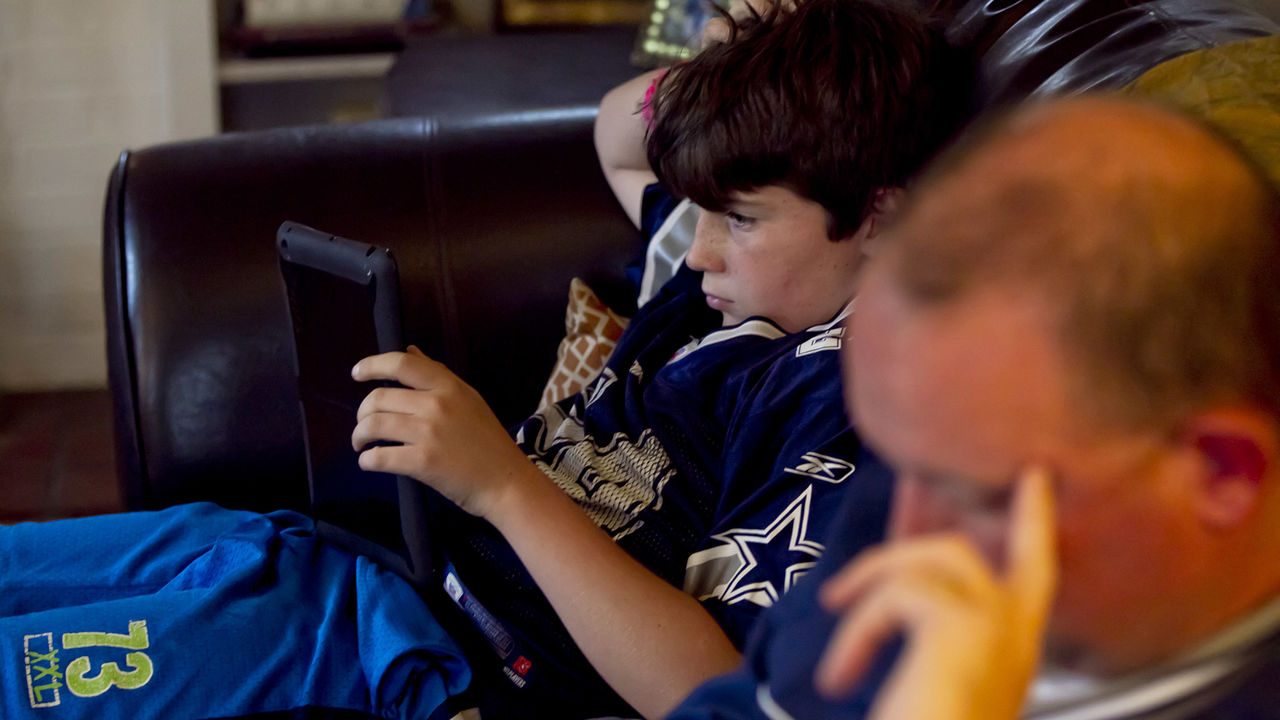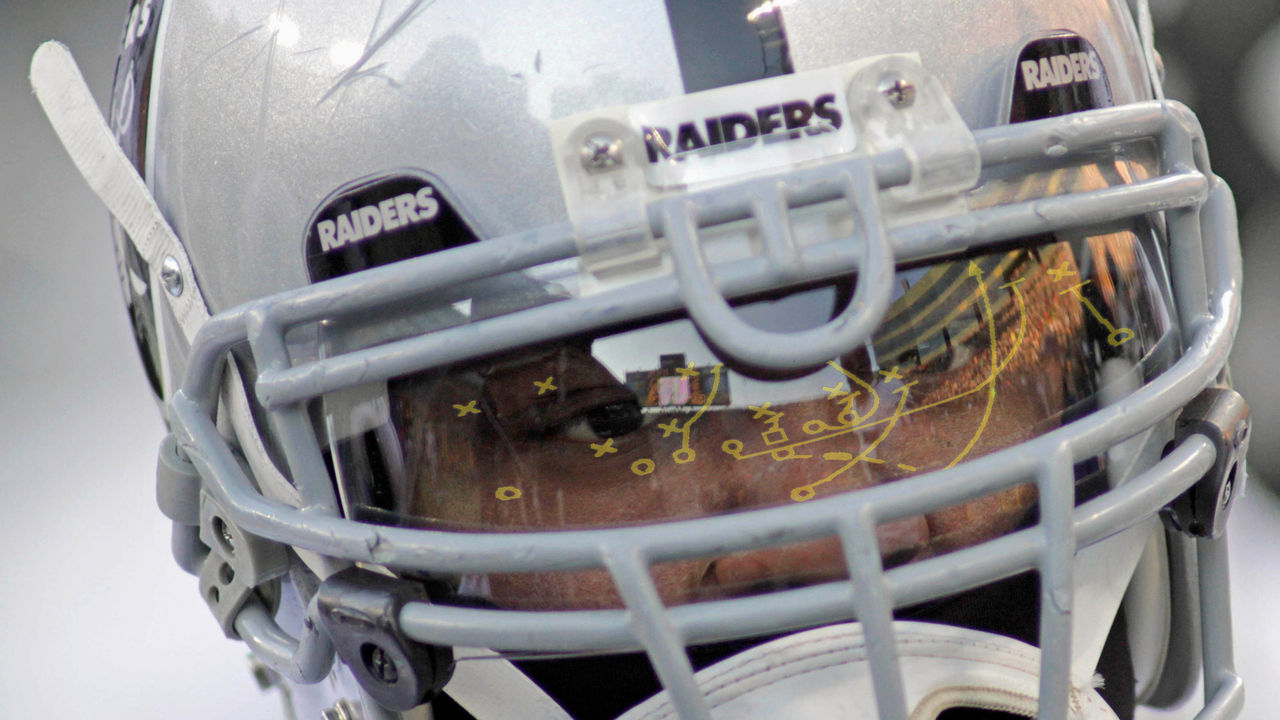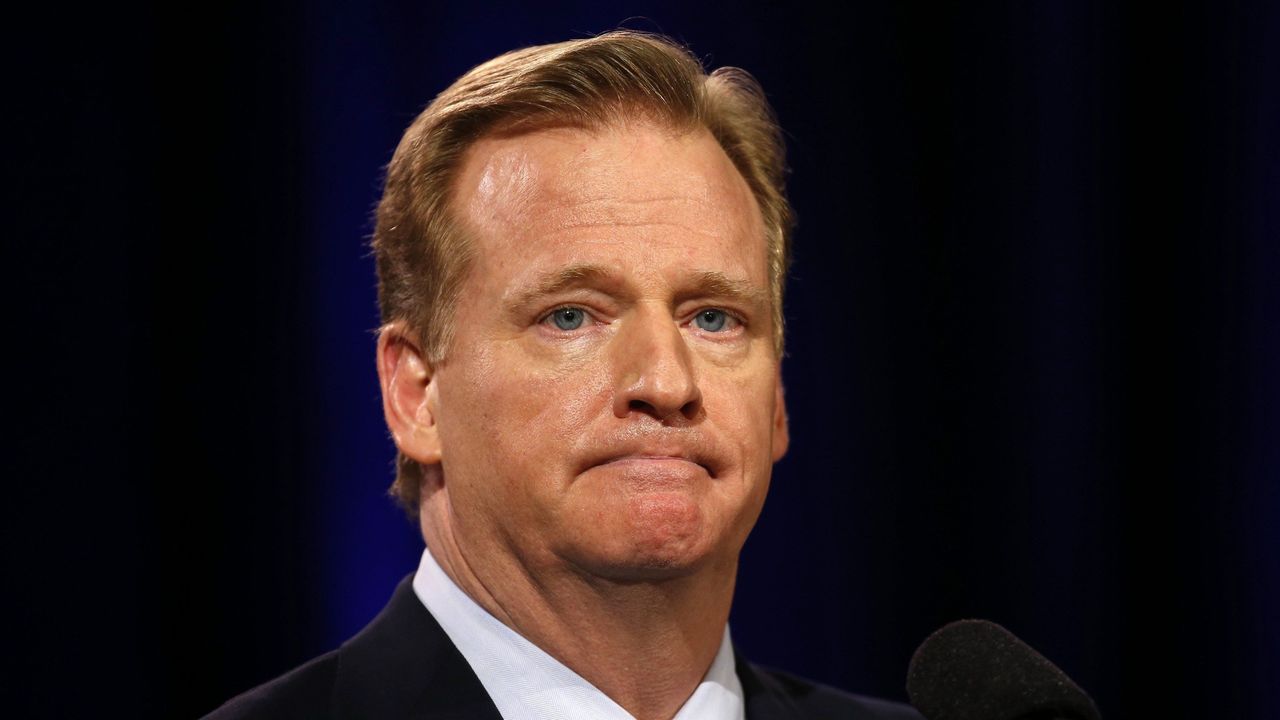Football's Future: Imagining the NFL in 5 years
Football's Future imagines the strategic, technological, and cultural innovations that will shape how football is played and watched in the coming decades.
The year is 2020. As the confetti falls, Andrew Luck's Indianapolis Colts celebrate their second-straight Super Bowl title inside the luxurious confines of the new Snapchat Stadium in downtown Los Angeles, shared home of the Los Angeles Raiders and SoCal Chargers.
At the dawn of a new decade, the NFL faces numerous challenges and opportunities, including the rapid decline of network television, major technological innovations that will forever alter the way football is played, and a looming work stoppage.
Moving on from network TV
The NFL's primary revenue stream is threatened as audiences turn away in droves from broadcast television to mobile devices and streaming services like Netflix. For the first time in decades, the league is forced to confront the possibility its billion-dollar business could soon dry up.

With the NFL's contracts with broadcast partners NBC, CBS, and FOX all set to expire in 2021, and the networks balking at ponying up billions of dollars to renew, the league is forced to enter a bold new era in football broadcasting by taking a page from an unlikely source.
Desperate to maintain profits, the NFL follows in the footsteps of Vince McMahon's WWE and launches a subscription streaming service of its own, viewable on mobile devices and Internet-connected TVs. The move proves to be a hit, and "Sunday Night Football," once network TV's highest-rated show, becomes the most-watched weekly live event on the Internet.
With the move online comes a host of new options for viewers. Fans can toggle between camera angles and multiple audio tracks, including "homer" commentary that favors a specific team, and a live feed of what the referee hears.
Rules change, records fall
The transition from network TV to streaming is made easier by the fact that audiences are as hungry for football as ever, in part because rule changes continue to make the game more entertaining.
The extra point is now a thing of the past, having been abolished after a few years of experimenting with longer kicks. In the end, moving the kick back did little to increase excitement, and the league pulled the plug on the experiment.
Under the new rules, touchdowns are automatically worth seven points and teams can elect to take six points and attempt a two-point conversion from the 1-yard line. This proves to be irresistible for most coaches, and games are routinely won and lost on dramatic two-point attempts.

The evolution of the game from one of ground-and-pound battles in the trenches to flashy passing plays and high scores continues unabated, due in large part to rules that favor up-tempo offenses. Teams strive to run the most offensive plays possible and out-finesse, rather than out-muscle, their opponents.
Forty passing touchdowns in a season, a feat only four quarterbacks had accomplished before 2010, is now achieved by at least half a dozen quarterbacks every year. A 38-35 score isn't the result of a shootout, it's a routine outcome.
Aerobic fitness becomes one of the most valuable player attributes. For the first time in decades, the average weight of players drops. Coaches favor leaner players well-suited to hurry-up schemes over beefy big-hitters who tire easily.
The need for speed
The desire to execute offenses as quickly and efficiently as possible leads to a major change in the way coaches operate and, ultimately, the death of an aspect of football that predates the forward pass: the huddle.
Coaches no longer call plays by radioing them to a speaker in the quarterback's helmet. Instead, they enter play calls into a computer that instantly relays instructions to all 11 players on the field via LCD wristbands and helmets with Google Glass-like technology.

Each player sees his individual assignment mapped out in front of him before the snap, eliminating the need to pause between plays. In essence, every offense becomes a no-huddle offense.
Looming labor strife
Not everything is rosy in the NFL. A dark cloud hangs over everything in the form of a collective bargaining agreement set to expire at the conclusion of the 2020 league year. The league and union narrowly avoided missed games in 2011, but that outcome looks optimistic now.
Bitter negotiations are on tap. This time around, the core issues on the table relate to player safety, player discipline and, of course, compensation.

Roger Goodell's approval rating never recovered after plummeting in the wake of the Ray Rice scandal, and public support has shifted strongly to the side of the NFLPA. At long last, the union appears certain to win a concession that will forever alter professional football and bring it in line with other major pro sports: guaranteed contracts.
Next: Imagining the NFL in 10 years